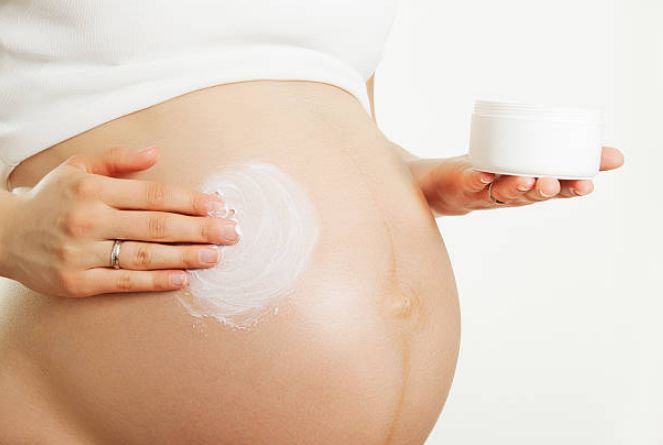One of the things women dread about pregnancy, apart from morning sickness and a backache, is stretch marks. Stretch marks look like red or purple streaks on your skin. These streaks eventually become a less obvious silver or white.
Stretch marks most notably appear around the bulging abdomen, but can also appear on the buttocks, hips, thighs, breasts and arms. Between 75-90 percent of all pregnant women develop stretch marks during pregnancy.
Yes, unfortunately, the statistic on that is quite high. Nonetheless, many pregnant women strive to achieve stretch-mark-free pregnancy.
So, how do you prevent the development of stretch marks?
1. The first thing most women look for is a cream or oil that they can apply. Take note that you shouldn’t just choose any moisturizing product from off the shelf. You will need a product that can go deeper, past the skin’s top layer (epidermis).
Highly recommended are products that have high amounts of vitamin A, vitamin E, collagen, elastin, glycolic acid, and emu oil, liposomes, and aloe vera gel. These ingredients are able to penetrate into your second layer of skin called the dermis.
The dermis is where the stretch marks occur. They help to replace damaged skin cells and also activate the renewal of healthy cells.
2. Eat foods that promote skin health such as those rich in vitamins A, C, D, E, zinc, silica and protein. These would include nuts, fish, carrots, citrus fruits, milk, eggs and leafy greens.
The right kind of nutrition will help your skin stretch better and also to bounce back quicker after birth. Avoid coffee, caffeinated drinks, tea, and smoking, as they are not good for your skin’s health.
3. Drink lots of water to keep yourself hydrated. Hydration is an important factor for healthy skin.
4. Control your weight gain. Doctors recommend women gain between 25 and 34 pounds during pregnancy. Gaining it slowly may help reduce your chances of getting them. Try not to experience excessive or rapid weight gain.
Taking the steps listed above does not guarantee that you will be free from stretch marks. Whether you get stretch marks or not are influenced by many factors such as:
– Genetics. If your mother or sister had them during pregnancy, the chances of you getting them are higher.
– Skin condition. Dry skin will be less elastic and makes you more prone to stretch marks.
– Amount of physical stretching. If you are carrying a very large baby or more than one baby, you are more likely to develop stretch marks.
– Ethnicity and skin tone. If you have fair skin, the probability of having them increases.
You will hear about women who took all the necessary steps to prevent stretch marks but got them anyway. What then? How do you remove stretch marks?
Only one cream has been proven to be highly effective and that is tretinoin cream, also known as Retin A. It is very expensive and must be prescribed.
However, this cream is not to be used by pregnant women or nursing mothers as its effects on the fetus or nursing baby are still questionable. Laser therapy is another option.
It’s quick and involves very little recovery time. The therapy reduces the appearance of the stretch marks and also improves your skin’s elasticity. Cosmetic surgery is usually the last resort to remedy severe stretch marks.
Before selecting laser or cosmetic surgery, consider first the high cost of these treatments.
Many women fear stretch marks because they are permanent and very rarely disappear. There are steps you can take to reduce the chances of getting them. However, that is all you can do — reduce the chances.
It does not guarantee that you will not get them. To get rid of them after they occur could prove expensive. It would be best to just enjoy your pregnancy and your bundle of joy and be consoled that stretch marks, naturally, do become less noticeable over time.

